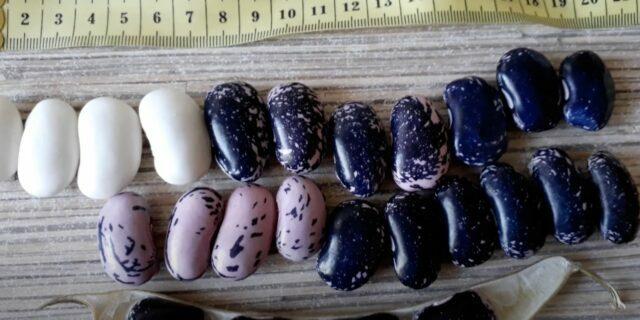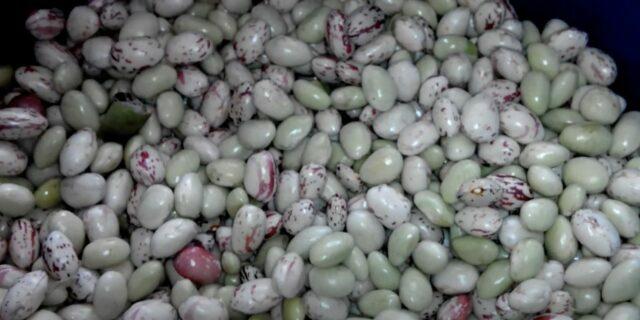When and how to plant beans and how to grow them
Miscellaneous / / May 30, 2023
Green pods can be eaten as early as two weeks after flowering.
When to plant beans
They start sowing this crop when the soil warms up to 12-14 degrees to a depth of 10 cm, and the air during the day - at least 15 degrees. Young bean sprouts can be affected by cold temperatures, so make sure your area is past a spring frost.
In the south, beans are planted before anyone else - already from mid-April. In the regions of the middle lane, suitable conditions usually develop in the second half of May, and in the north - in late May and early June.
How to choose bean seeds for planting
There are two main forms of beans.
The bush grows compactly and reaches a height of only about 0.5–0.7 m. As a rule, it does not need support, even when many pods ripen on one plant.
Curly beans grow up to 3–5 m in height and require additional support. You can plant a plant near fence, for which numerous lashes will cling, or make separate supports. By the way, beans are a great option for creating a thick and useful hedge.
Depending on the variety, bean pods reach from 5 to 20 cm in length. And the beans themselves are not only white, but also yellow, red, purple, black and multi-colored.

1 / 0
Frame: Green Garden / YouTube

2 / 0
Frame: COUNTRY SEASON ALL YEAR ROUND / YouTube
Also, beans differ in terms of ripening. The early harvest can be harvested in 65–75 days from the moment of germination, the mid-ripening one is ready in 75–100 days, and the late one in at least 100 days.
How to prepare a bed for growing beans
Find a well-lit sunny area, protected from strong winds. So, you can place a bean garden along a fence or building that will serve as a support for plants.
If the soil is in your kitchen garden fertile and loose, you can not engage in its preliminary preparation and immediately plant beans. In other cases, 1–2 weeks before sowing, apply 5 liters of compost or rotted manure, 30 g of superphosphate and 20 g of wood ash per 1 m² of land 1–2 weeks before sowing. Dig up the soil onto the bayonet of a shovel and level the surface with a rake.
How to plant beans
Everything will work out, even if you decide to sow something for the first time.
Soak the beans
This procedure will help the beans rise faster. Dissolve 1 g of potassium permanganate in 200 ml of water. Place the beans in the pink liquid and leave for 30 minutes.
Then pour off the solution. Cover the beans with a damp cotton rag or gauze and add plain water to the container until it barely covers the beans. Leave them in a warm dark place at a temperature of about 25 degrees for about a day.
After that, drain the excess liquid from the container with the beans and start sowing.
Make holes
Their depth should be about 4–5 cm, and the distance between them should be 5–10 cm. If you are planting multiple rows of beans, space them 15 to 30 cm apart. It is convenient to make recesses in the ground with a stick or a thin slat.
plant beans
Place 2-3 beans in each hole.
Sprinkle the holes with soil and lightly compact its surface with the palm of your hand.
Pour plenty of water over the crops and let it soak.
Wait for shoots
Sprouts will appear in about 6-14 days.
As soon as the beans hatch, thin out the crops by carefully pulling out the weaker specimens. Leave one seedling in each hole.
How to grow beans
Plants will need very little of your attention.
Tie up the beans
The bush form does not need this procedure. Curly can be sent to trail along a fence or other structure if you planted a plant nearby.
If the beans have nothing to lean on, drive in a stick, rebar or a piece of pipe about 2 meters high near each bush. As you grow, wrap the vine around the support.
Water the plant
The soil in the garden should be moderately moist. Pour warm water between the rows, trying not to get on the leaves and stems of plants. The frequency of watering depends on the weather and the quality of the soil. On average, this is done once a week, and during flowering and after it - 2 times. Stick to the golden mean: do not let the soil dry out, but do not turn it into a swamp.
Spud beans
When the beans are 10 cm tall, gently loosen the soil between the rows with a fine-toothed hoe. Make movements towards the bushes to cover their stems with soil to the lower leaves.
This procedure will help the young beans to get stronger and form more stable trunks.
Feed your beans
In general, beans are not picky about top dressing and can do without them, especially if the garden has good fertile land. When the quality of the soil is in doubt, fertilizers are applied twice.
- As soon as the beans release a couple of true leaves. Dissolve 30 g of superphosphate in 10 liters of water and pour this mixture into the aisles. This volume is enough for 1 m² of beds.
- When the beans begin to bloom actively. This time, dissolve 15 g of potassium salt in 10 liters of water and still pour the aisle with nutrient liquid. The volume is calculated for 1 m² of beds.
Try to fertilize early in the morning or in the evening at sunset. Pour fertilizer into moist soil and do not allow solutions to get on leaves and stems so as not to burn them.
When to Harvest Beans
Young pods can be cut as early as 2 weeks after flowering. True, they need to be eaten immediately, because they are not suitable for long-term storage.
If you are growing beans for the winter, be guided by the ripening dates indicated on the bean package. Approximately after such a period of time, you can start collecting. The pods themselves will also tell about ripeness: if they have dried up, become brownish, and the beans inside are hard to the touch, harvest.
How to harvest beans and store them
Everything is pretty simple. Uproot the plants and remove the pods from them with your hands or scissors. Tender unripe specimens can be immediately eaten or frozen. Lay dry and ripe in one layer on a flat surface in a warm place under a canopy. Leave them for 1-2 weeks to dry completely.
After that, pour the crop into a basin or other container for convenience. Open the dry pods with your hands and remove the beans.
Store beans in covered glass jars or in linen bags at room temperature.
Read also🧐
- How to grow mushrooms in the garden
- How to grow onions: a detailed guide
- How to grow cucumbers
- How to grow lettuce in a garden bed or windowsill
- How to Grow Strong Strawberry Seedlings and Harvest Berries in Just a Few Months

